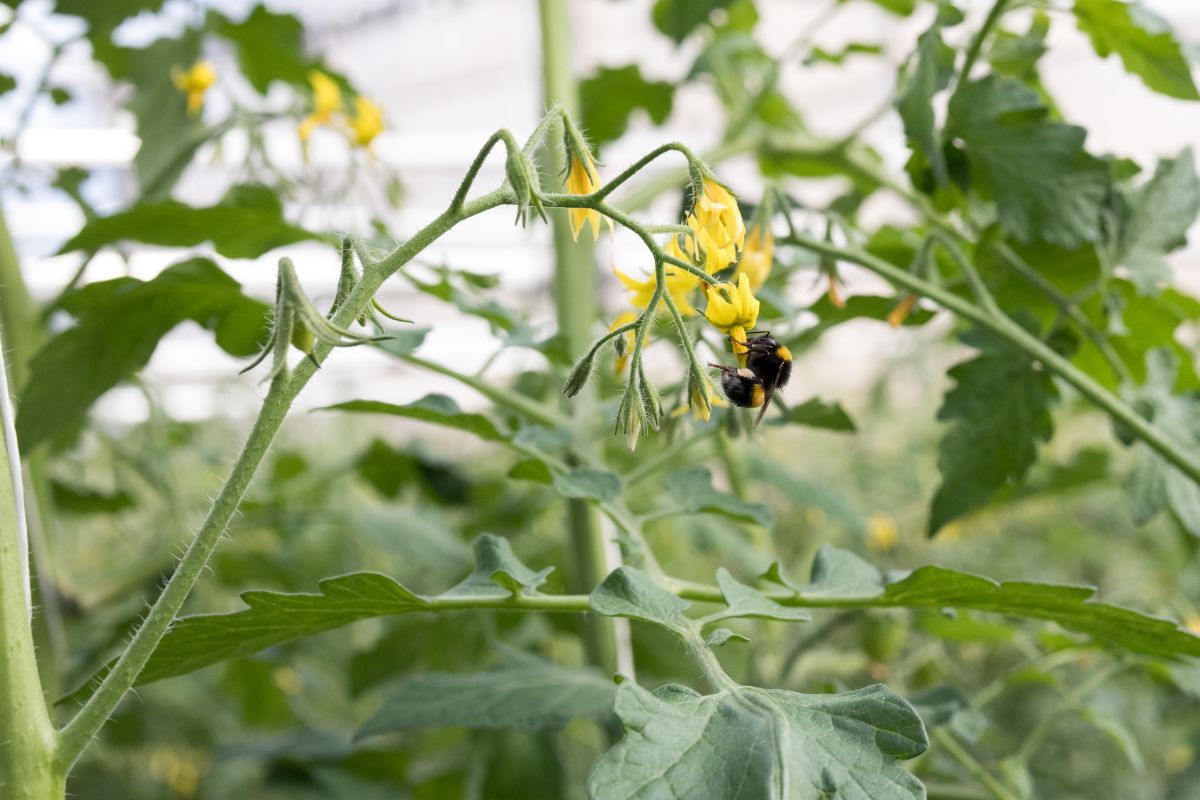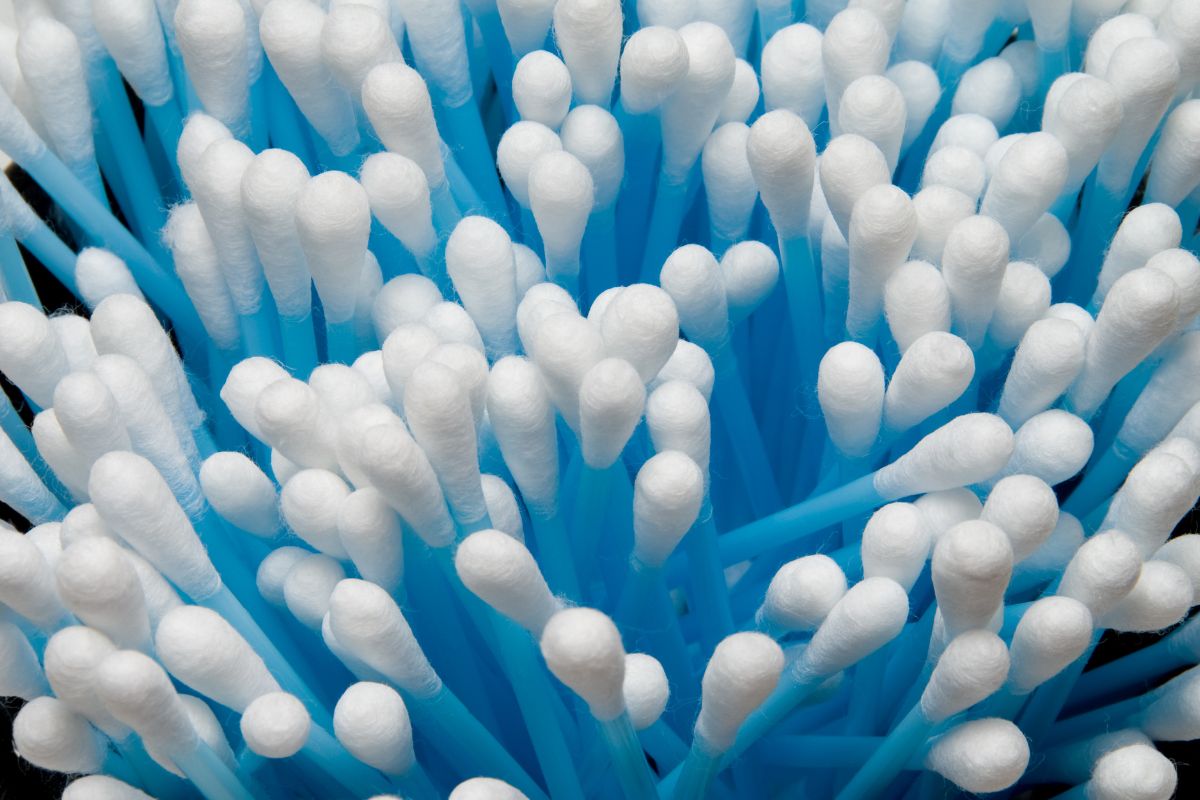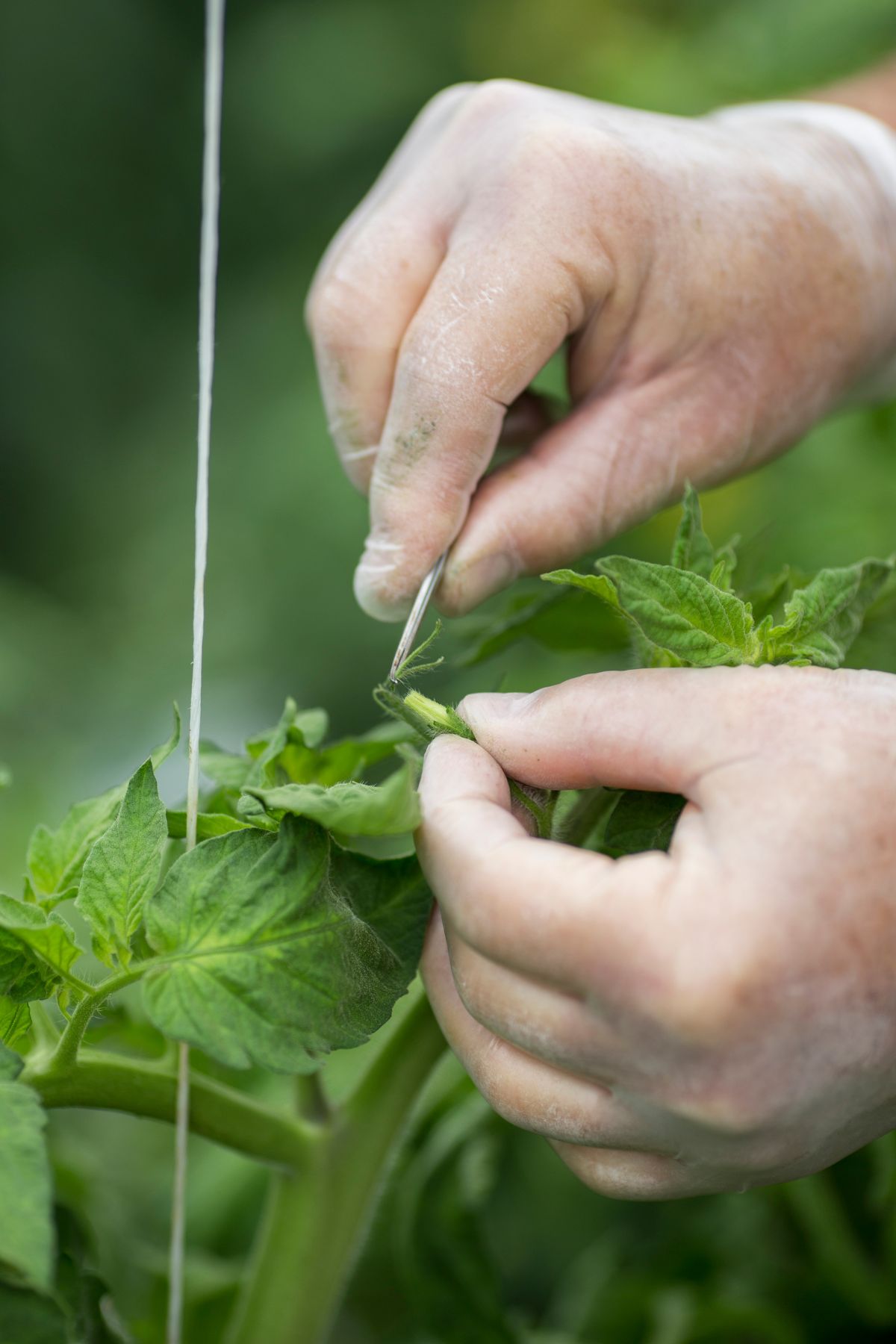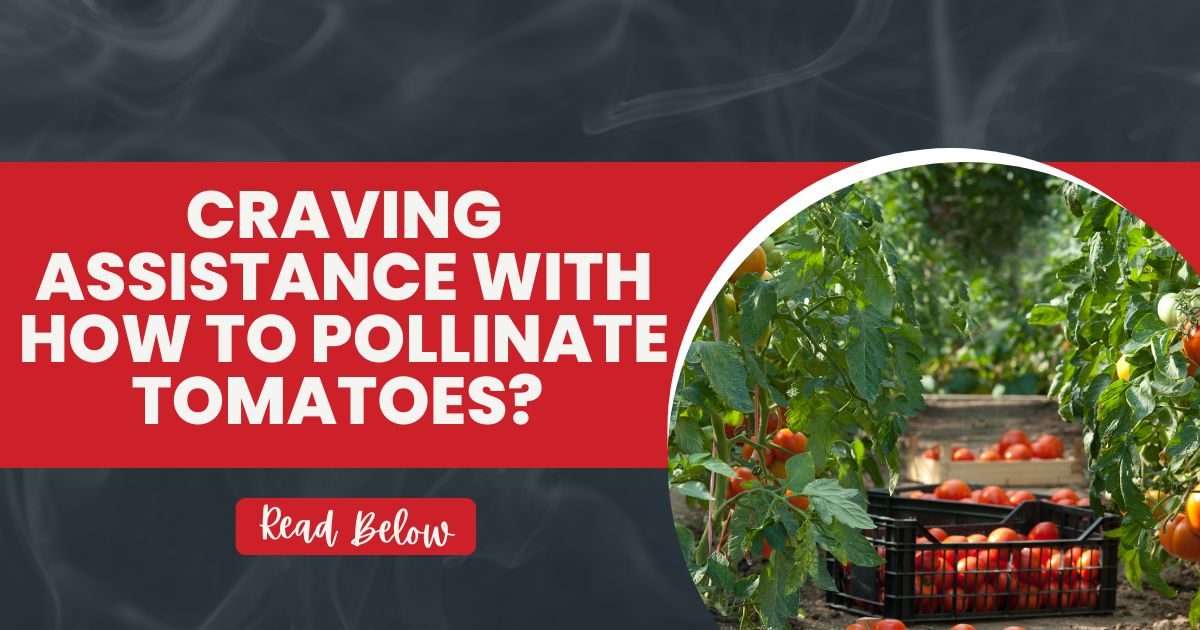Pollinating Tomatoes
One of the most frequent issues among tomato producers is the lack of fruit set, which occurs when blossoms fail to form fruits before they wither and drop. Learning how to pollinate tomatoes can help deal with this problem.
The causes for the absence of fruit are frequently predictable and simple enough to solve, whether you haven’t picked a single tomato or your plants have suddenly ceased producing. So don’t give up; We’ll show you how.

Are Tomatoes Self-Pollinating?
Yes! At a rate of around 96% of the time, tomatoes self-pollinate. The stamen and pistil of a tomato blossom are both present, making the tomato flower a full flower. The stamen’s yellow anthers, which produce pollen, encircle the pistil in the flower’s center. The portion of the pistil that extends above the anthers has a stigma attached to its end.
To make tomato pollen fall onto the female plant, the male must shake loose from the sticky, heavy pollen. The wind or a bug may cause this “jostling.” Fertilization can occur when the flower’s stigma receives the pollen.
The pedicle becomes yellow without pollination, the flower dies, and finally, it drops. Tomato flowers should undergo pollination within 50 hours of development to avoid sterility. In most cases, pollination takes place between 10 am and 4 pm.
Temperature is one of the most significant factors influencing tomato self-pollination. When the daytime temperature rises between 88° and 90° Fahrenheit ( 31° and 32° Celsius) or the nighttime temperature rises to 70° Fahrenheit (21° Celsius), tomato plants will lose their blossoms.
Low nighttime temperatures below 55° Fahrenheit (12.8° Celsius), however, can hinder the development of pollen tubes in the early part of the season or make the pollen sterile. This will inhibit normal fertilization and result in the formation of tomato flowers but no fruit. The fruit won’t set until nighttime temperatures exceed 55° Fahrenheit (12.8° Celsius) for at least two nights. Read our article and find out What Temperature Is Too Cold For Plants?
How to Pollinate Tomatoes Indoors
Pollinating tomatoes indoors is relatively easy since it requires locally available tools. You do not need technical knowledge. Any of the following techniques will enhance the fruit set by simulating wind or buzzing insects:
Shake the Plant
You need to shake your tomato plant to simulate a breeze and encourage pollen shed. You can achieve this by touching each flower’s top quickly yet softly. You can also flick the flower stems in quick, staccato spurts.
Art Brush
A little art brush works well to collect and spread pollen like nectar-gathering insects. The brush can be cheap, but it should have natural bristles because they hold the pollen better than plastic ones.
Lift the flower gently and use the brush to massage or spin it around the interior of the petals, along the pistil, and over the stigma’s tip. Pollen grains will stick on the brush and move in this way. Always use a separate brush or wash your brush with isopropyl alcohol before going on to another kind of tomato to prevent cross-pollination.
Cotton Swabs
Another useful tool is cotton swabs, whose surface of finely spun cotton is perfect for gathering and dispersing pollen. The same way you would use an art brush, use a swab. Another option is to gather the pollen in a tiny dish and delicately dab each flower’s stigma with the swab (or a brush).

Battery Powered Toothbrush
Using a basic battery-powered toothbrush is the simplest, fastest, and most efficient approach. For commercial use, electric vibrators are available; however, a child’s toothbrush will do the trick for the home gardener for only a few dollars.
The anthers transfer their pollen onto the stigma due to the vibrating head’s imitation of buzz pollination. Lay the vibrating toothbrush head on the base or stem of the flower, let it buzz for a moment or two, and then go on to the following blossom.
How to Pollinate Tomatoes in a Greenhouse
One of the biggest challenges of planting tomatoes indoors or in a greenhouse is keeping off insects responsible for tomato plant pollination. Also, due to a lack of proper air circulation, tomato pollination in greenhouses may not happen on its own. Tomatoes produced in greenhouses frequently require manual pollination.
Manual pollination and bumblebee hives are the two ideal pollination methods in this setting. As a small-scale grower, learning how to manually pollinate tomatoes, as explained above, will work well for you.
Manual pollination involves the simulation of wind or insect activities. In one instance, you may have to shake each flower cluster daily for pollination to occur. The best time to do this is in the middle of a sunny day when the humidity is approximately 70%. Alternatively, use an electric toothbrush to simulate manual vibration.
For a brief moment, touch the stem of each cluster, being careful not to touch the bloom since this might lead to holes in the ultimate fruit. This technique is ideal for a manageable amount of plants and can be labor-intensive.
Bumblebee hives are an excellent pollination solution for large-scale tomato greenhouses. According to the University of Connecticut Integrated Pest Management Program, bumblebees are “buzz pollinators,” which means that when they land on a tomato blossom, they vibrate the anthers and cause the pollen to fall to the ground.
Bumblebees from biological pest management businesses are the best, according to South Dakota State University Extension, because they may supply maintenance-free hives that are suitable for the size of your greenhouse.
The Reasons for No Fruit on Tomato Plants
Every tomato grower has experienced their tomato plant not producing fruit at least once. It’s a normal occurrence. They bloom and have beautiful appearances, but nothing else happens.
Unfortunately, the issue rarely arises from a sickness or an insect since those are controllable. Mother Nature is to blame for this particular problem. Here are a few reasons for tomato plant not fruiting:
Not Enough Pollination
The first factor to consider is the potential accessibility of your crops to pollination insects. Because tomato flowers are self-fertile, they can pollinate themselves. However, bees and wind greatly enhance pollination since they gently nudge the blooms, helping to release the pollen from the stamens.
The bumblebees are particularly skilled at this. These low vibrations practically shake the pollen-free, allowing it to fall into the stigma, the female part of the flower that receives the pollen, as they contract their flight muscles (a process known as “buzz pollination”).
It might be worthwhile to consider whether pollinating insects can easily access the plants if you’re growing tomatoes in a greenhouse or polythene tunnel. Open windows and doors allow for sufficient airflow, which can help keep plants cooler and reduce the danger of illness.
You can artificially pollinate tomatoes by gently shaking the plants to simulate the buzz of bees. Swing the canes or thread holding the tomato vines, or raise and gently (and from a very close distance!) drop the container tomatoes.
Extreme Temperatures
High temperatures can occasionally ruin pollination in hotter climes. Hot spells, which occur when daytime highs exceed 88° Fahrenheit (31° Celsius) and, more importantly, when nighttime lows do not fall below 75° Fahrenheit (24° Celsius), have the unfavorable consequence of sterilizing pollen. It seems that tomatoes prefer heat but not too hot!
During a heat wave, all you can do is pass the time. Keep plants healthy and well-hydrated in the interim so that they will be in a great position to increase output once more when temperatures do finally drop.
Remember that various tomato types adapt to different climates. Grow a heat-tolerant variety that can thrive in your area if you live in a hot climate.
Humidity, or a lack of it, is an additional complication. While in extremely dry climates, flowers may become so parched that pollen fails to stick and rolls off, extremely high humidity might block the pollen, preventing it from falling. In this case, regular watering may assist in slightly increasing the humidity level surrounding the plants to help the situation.
Insufficient Fertilizer (or the Wrong Type)
The soil fertility is the last thing to take into account. Are your tomato plants receiving the nutrients they require to produce ripe, delicious fruits? Even if your soil is rich, you should start fertilizing your tomatoes with an organic fertilizer strong in potassium, often known as potash, as soon as the first blossoms develop.
Potassium’s ability to encourage blossom initiation facilitates fruit production. Use a commercial tomato fertilizer to feed your tomatoes or prepare your own low-cost high-potash liquid fertilizer. Every garden needs a patch of comfrey for making homemade fertilizer.
After you’ve done everything you can to make things better, all you have to do is wait patiently for Mother Nature to finish the job. Keep a positive outlook since things will inevitably get better. When that happens, the tomatoes will arrive quickly, and you’ll be stuck not knowing what to do with them all!
The Basic of Blossoming
Tomato plants have ideal blossoms for self-pollination. In other words, both the female and male reproductive systems are present in each flower (i.e., the stigma and stamen).
Since each flower releases pollen from the stamen to settle on its stigma, pollination is simple. And after fertilization, fruit grows.
Usually, tomatoes rely on buzz or wind pollination for fertilization. The most efficient method, however, in terms of fruit size, yield amounts, and enhanced seed count, according to multiple studies, is buzz pollination.
Buzz pollination is shaking pollen from the anthers, or the portions of the stamens that retain the pollen, by particular insects, ones with the correct vibes like carpenter bees (Xylocopa spp.) and bumblebees (Bombus spp.). Conversely, honeybees are unable to do this.
When a breeze rattles the petals, they release pollen; in a process known as wind pollination. However, Solanum pollen is sticky and heavy compared to other pollen grains; thus, it requires a strong breeze to separate the grains from the anthers.
Pollen is typically shed from early to late in the day, with midday being the best time for release and transmission.
Pollination is most facilitated by sunny, warm weather and low humidity, but manual pollination eliminates the need to wait for ideal conditions. Even in less-than-perfect weather, some pollen movement still happens.
How Often Should I Hand-Pollinate?
Hand pollinating tomatoes should be frequent, at least every three to four days. Do this in the scorching midday sun. To ensure that every blossom on your plant has experienced fertilization, target every open flower and repeat as necessary until they stop flowering. Now watch the formation of fruits after the petals wilt.

A Final Word
Although tomatoes are self-pollinating plants, the fact remains that pollination of tomatoes requires careful balancing between the right temperatures and sufficient flower vibration to enable optimal pollen drop.
If, for some reason, mother nature fails to pollinate your tomatoes, don’t worry. You can easily take control of the process using the techniques discussed herein. However, be gentle and careful when doing this. The best time to pollinate your tomatoes is after their blossoms are fully open and the petals have slightly curled back.
Keep in mind that techniques for manual pollination when doing indoor or greenhouse planting may vary; use whatever style that works well for you.
Happy planting!
